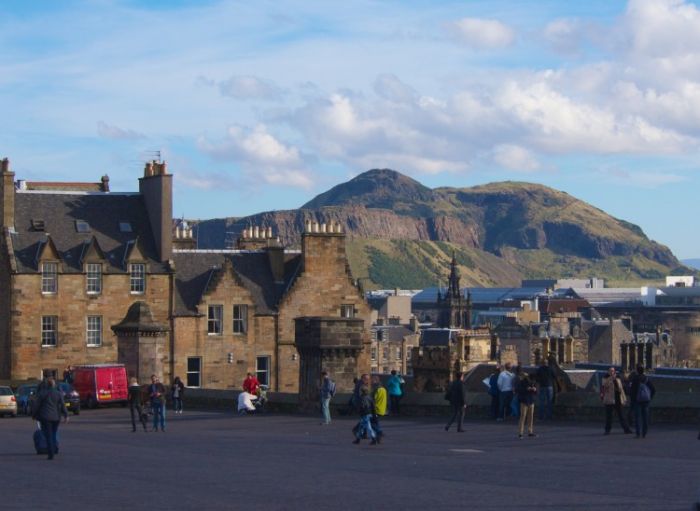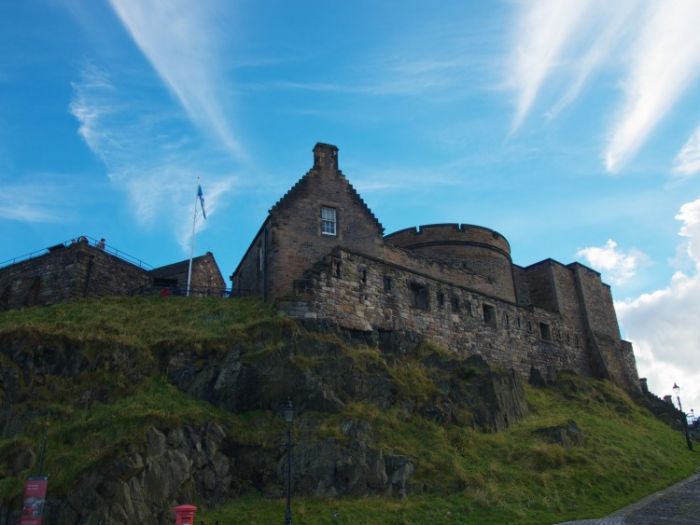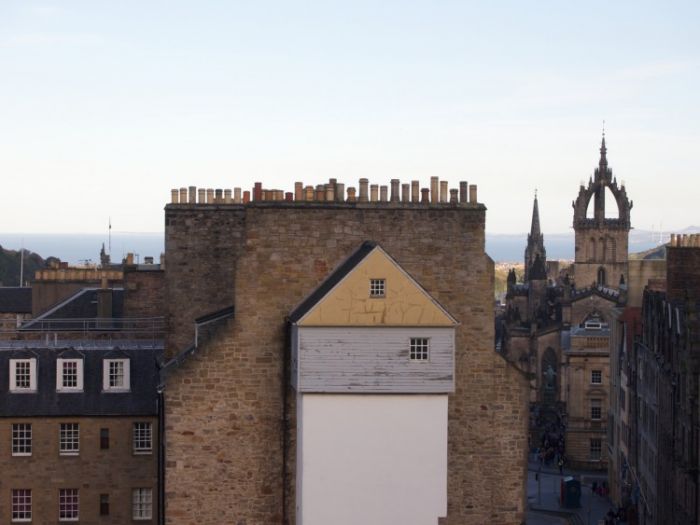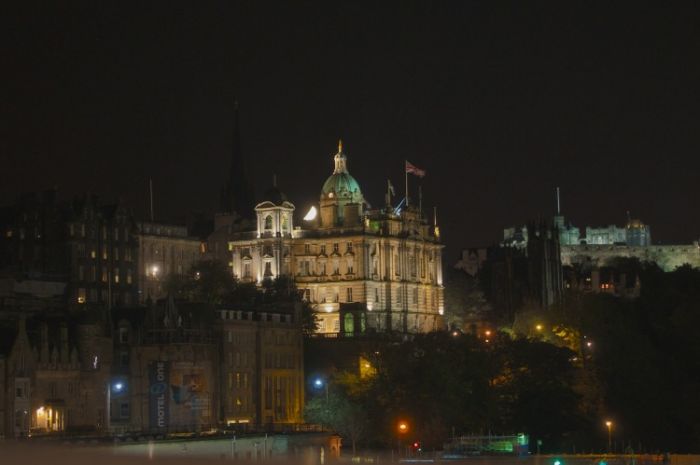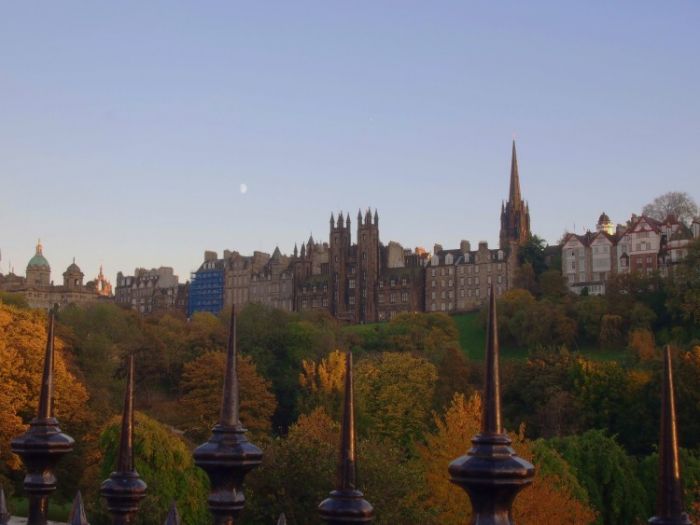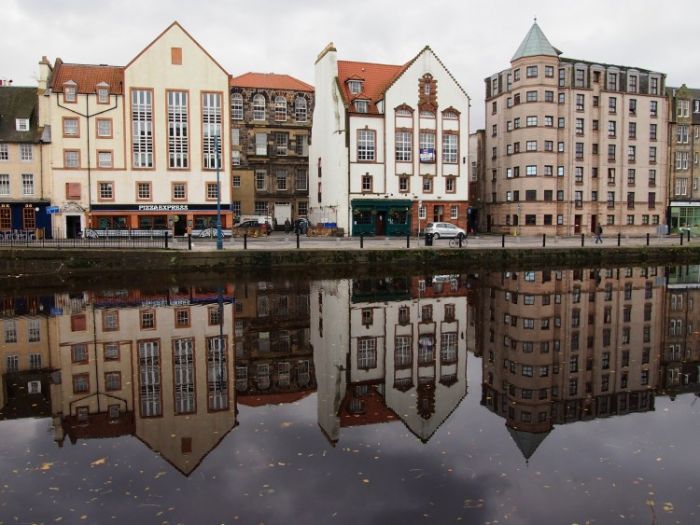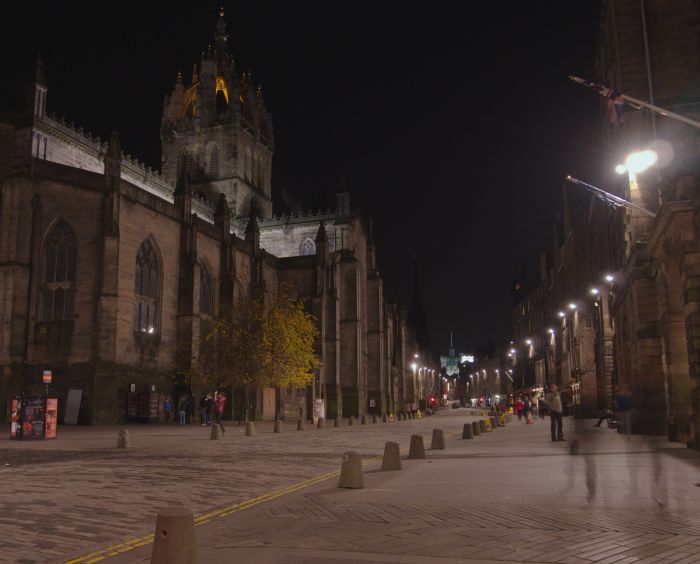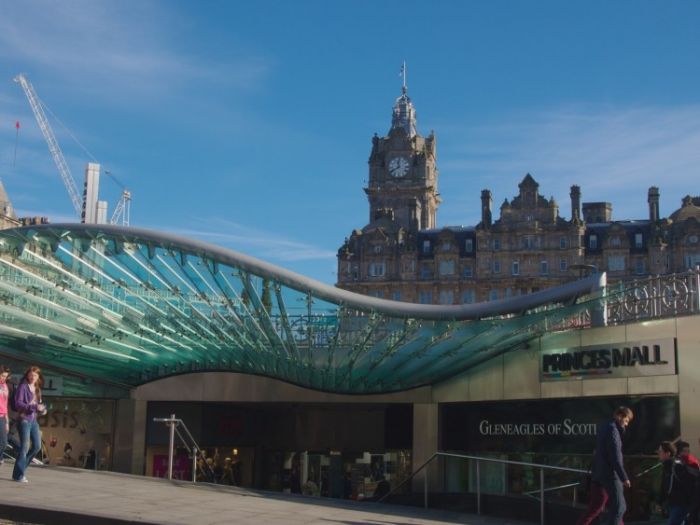
Edinburgh is an elegant, walkable city that offers visitors the opportunity to delve deeply into the city and the nation’s intriguing history, enjoy a musical, a play, even a traditional bagpipe concert or simply shop until one drops.
Probably that’s why it beat London, Paris and Barcelona for the title of ‘Europe's Leading Destination’ 2012 at the World Travel Awards recently.
A good start for any visitor to Scotland’s attractive Georgian capital city – especially those arriving for the first time – is a ride on one of the ‘step-on-step-off’ city bus tours offered by companies such as the Edinburgh Tour company. Their routes take in both the new town and old town with highlights including the National Gallery, the famous castle on the Royal Mile, the Museum of Childhood, the Scottish Parliament and Holyrood Palace, one of the holiday homes of the British Royal family. We took the named 'Edinburgh Tour' itself (Edinburgh Tour company has five differently named city tours) and found its live talking guide both informative and entertaining. Other tours have pre-recorded information on earphones. The tour buses have convenient pick-ups, in the downtown area, on the Waverly Bridge in front of the Princes Mall.
One of the peculiarities of Edinburgh is the origin of its abiding and affectionate nickname, Auld Reekie, meaning ‘Old Smokie.’ In the 16th century, the city became, in effect, the Manhattan of medieval Europe, with what we now call skyscrapers casting their long shadows over the then tiny downtown area. This occurred because a combination of underlying volcanic basalt and the wet bog in what is now known as new town was then impossible to build on. So, with a burgeoning population, the only way was up. And up, and up. Thus, ten to twelve-storey buildings lined the Royal Mile with everyone pretty much living cheek-to-jowl, with smoke bellowing from the chimneys of the tenements and close packed houses. All this at a time when toilets, sewage systems as well as elevators were but figments of a lively imagination, so getting rid of human waste was ….how should I put this delicately….a weighty challenge. But with bucket in hand and a warning cry of ‘gare de l'eau,’(which, in Scottish vernacular, became ‘gardyloo’) out the window everything went, plop on to the ground below. Thus the nickname ‘Auld Reekie’ entered into popular parlance.
Hour-long walking tours bring visitors into some of the narrow walkways between the former high-rises with detailed explanations about the way of life in those bygone days. One particularly interesting walk is hosted by the museum 'Mary King’s Close' in which an actor impersonates a local man who lived there in the 16th century and who guides guests underground through some of the homes and hovels which were half-buried under the Royal Exchange when it was built in the mid-1700s.
An alternative - or complementary - walk is the aptly named, ‘Historic Vaults,’ by which guests descend into the labyrinth-like belly of 18th century Edinburgh under the South Bridge and visit some of the 120 hidden vaults there. Our guide, William, with Mercat Walking Tours, gave a most lively and informative commentary on the people who worked and lived here, mostly in quite atrocious conditions, allegedly operating both legal and illegal businesses ranging from risqué night-clubs to body snatching (in those days, medical schools paid handsomely for fresh cadavers, thus the Edinburgh-based Burke and Hare story). Further explorations of the Royal Mile can be made with the same company on their enticing tour ‘Secrets of the Royal Mile.’
Speaking of bodies, a visit to the city’s intriguing Surgeon’s Hall Museums, a ten-minute walk over the North-South Bridge, provides tantalizing background on the lucrative trade in body-snatching in the 19th century and the roles played by killers William(s) Burke and Hare and Doctor Robert Knox, but also much more. Beginning in the 1700s, Edinburgh hosted one of the leading medical schools in Europe at which pioneers such as Sir Charles Bell, neurologist, after which the condition, Bell’s palsy, was named; James Simpson, who introduced chloroform as an anesthetic; and Joseph Lister, a pioneer of antiseptic surgery, were very prominent. An hour roaming through the comprehensive collection of body parts - including almost the entire body skin of a French officer killed in 1793 – and the history of dentistry in the room next door, is most enlightening. There is even a short video interview with doctor and author Sir Arthur Conan Doyle who explains how the character of his world-renown sleuth, Sherlock Holmes, was based on one of his medical professors who was particularly adept at investigating medical conditions.
A second museum worth visiting is the Writers Museum a few steps off the Royal Mile, which is free to visitors. The ground-floor exhibitions focus on three leading writers with Edinburgh connections - Sir Walter Scott author of ‘Rob Roy,’ Robbie Burns, farmer turned national poet, and Robert Louis Stevenson, who penned the colorful adventure story, ‘Treasure Island’ as well as the ‘Strange Case of Dr Jekyll and Mr Hyde.’ For a more comprehensive overview of Scottish history, visits to the Royal Museum of Scotland and Museum of Edinburgh are worthwhile, also providing particularly convenient retreats if one finds oneself enduring Scotland’s infamous wet weather.
An indoor stop of a different nature is Camera Obscura and World of Illusions on the Royal Mile, an amusing collection of interactive optical experiences. Great fun for both adults and kids, and with wonderful views offered over Edinburgh from the rooftop.
Nothing, however, beats a leisurely outdoor walk around Edinburgh, and there is plenty to see and enjoy. The castle, of course, is a must-see, if only to enjoy the breath-taking views. A highlight of the visit is the small museum hosting the so-called ‘Honours of Scotland,’ the Scottish crown jewels dating from the fifteenth and sixteenth centuries, reputedly the oldest such jewels in the British Isles, and the Stone of Destiny, the sacrosanct stone upon which previous rulers of Scotland were crowned.
For something a little different, take a stroll around Deanhaugh Street and Raeburn Place, a ten-minute walk from downtown. I found it a quaint, pleasant little neighborhood much akin to Notting Hill in London and a great place to find the best of Scottish cheeses (three boutique cheese mongers are to be found there).
Hungry, tired of history? Why not indulge yourself in one of Edinburgh’s many fine restaurants - Wedgwood, The Honours, 21212, Martin Wishart or Restaurant at the Bonham – they are but several I‘d recommend (see separate reviews). Or go on a shopping spree on the elegant Princes Street or nearby George Street. Or indeed you might simply want to rest your feet and take a break in leafy Princes Gardens and enjoy the sunset.
Culturally - even excluding its famous festival in August – Edinburgh offers diversity. For example, on our visit, we managed to see two very contrasting productions at The Playhouse and at the Kings Theatre. The former, packed for opening night, hosted ‘American Idiots,’ a modern-day musical featuring the songs of punk rock band Green Day and the story of three young friends who set off to change the world. At the Kings Theatre, we enjoyed ‘The Cone Gatherers,’ a play based on a novel by Scottish writer Robin Jenkins first published in 1955. As for traditional pubs to quench your thirst, you can’t go much wrong by popping into Theatre Royal beside The Playhouse and the Café Royal dating back to 1826 on Register Street just off Princes Street.

